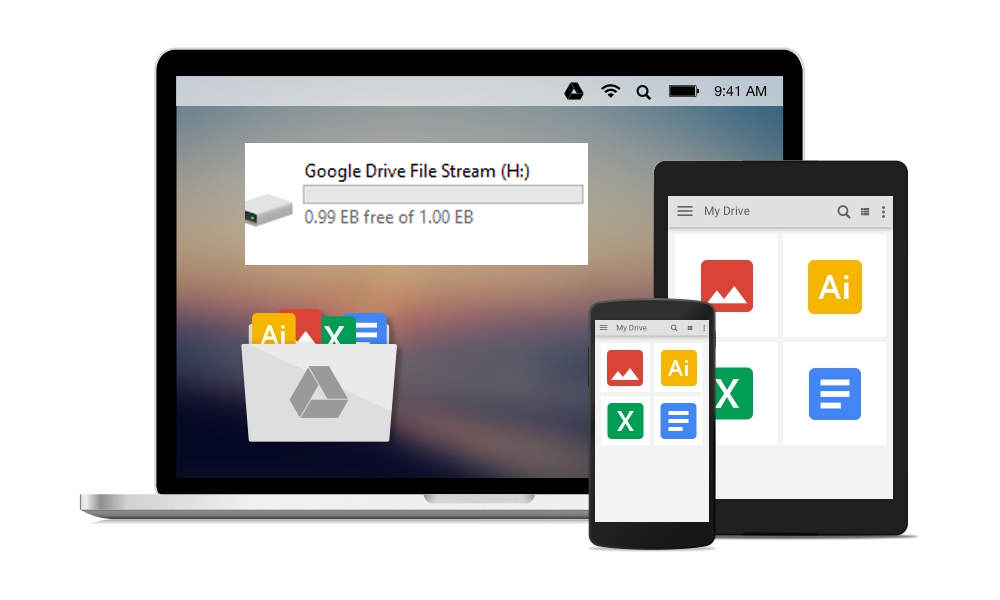

- #Google g suite backup and sync update#
- #Google g suite backup and sync upgrade#
- #Google g suite backup and sync Pc#
- #Google g suite backup and sync Offline#
- #Google g suite backup and sync download#
Okay so that's my "problem," but here's the solution (I think). So how do I get rid of the "old" Google Drive folder, and how do I make sure all my files are stored locally in the new Volume like I want? So my old Backup and Sync folder is still there, and worse, the new Volume doesn't have my files downloaded to it like I want the folders in the new Volume have a little cloud icon next to them in Finder, and they only contain like a few bytes of data, so clearly my 60+ GB of files aren't downloaded there. This "new" one is actually not a folder but a Volume (as in, my computer thinks it's an external hard drive). Specifically, the "old" Google Drive folder still exists at Macintosh HD/Users/, and now there's a "new" one also called Google Drive which anchored itself at the top of my folder view in Finder. I followed all the installation instructions and left the options as they were (it seemed like it on both computers it found my locally stored Google Drive folder), and after the installation was done, I was frustrated to see that I had a new Google Drive folder but also the old one, just like you're describing.

Yesterday after seeing the prompts to update, I went ahead and updated to the new Google Drive desktop app. I have a desktop and a laptop, and I had it setup so that my entire Google Drive folder was always synced with both computers, and the entire folder was downloaded and stored locally (offline) on both machines.
#Google g suite backup and sync update#
I was having this same issue, but after looking into it, I think this behavior is the way it's supposed to be working? TLDR: I'm not 100% sure, but I think that "left behind" folder actually contains the original local files that got synched (so it will continue to update like it used to with Backup and Sync), and you can basically just ignore that new separate drive.įor context, I was a longtime user of Backup and Sync on Mac. With Drive File Stream, users can continue to use the same apps like Microsoft Word and Adobe Photoshop with any changes automatically being saved to Drive.Joined just because of this.
#Google g suite backup and sync Offline#
Files that are used most often will be available in the background intelligently while users can also specify which files they want available for offline use.
#Google g suite backup and sync download#
Once available, Drive File Stream will allow users to automatically stream a file they want to view or edit directly from the cloud on-demand, without the need to download the file first. This option won’t be possible for organizations that have disallowed Google Drive for Mac/PC.
#Google g suite backup and sync upgrade#
If administrators have allowed Google Drive for Mac/PC in their organization, users will be able to download and upgrade to Backup and Sync. When the rollout of Backup and Sync starts in two weeks, G Suite users will obviously not automatically be upgraded to the new tool. If you want early access you can sign up for the early adopter program. Google’s enterprise-focused solution is the Drive File Stream that will be made generally available to all G Suite Basic, Business, Enterprise, Education and Nonprofit domains later this year. Your new storage can take up to 24 hours to reflect.
#Google g suite backup and sync Pc#
To upgrade your storage plan, go to on your Mac or PC > select your preferred storage plan > enter your payment information > click Subscribe. Google Drive does have affordable storage packages, which cost $1.99 per month (or $19.99 billed annually) for 100GB, $9.99 per month (or $99.99 billed annually) for 1TB or $99.99 per month for a massive 10TB of storage. For users that have larger files on their Mac or PC the 15GB could be used up very quickly. Google Drive’s free tier gives users access to 15 gigabytes of storage, which should be fine for the daily backup of a few folders. Each folder will list the current file size that will be uploaded. Once users sign in with their Google Account, they will see the above screen where they can select which folders they want to continuously sync to Google Drive. When the Backup and Sync tool starts rolling out on June 28, the app features a simple interface that will allow users to select which files on their Mac or PC should be synced automatically. Backup and Sync is primarily intended for consumer users, while enterprise users who need access to large corporate data sets will eventually get access to Drive File Stream, which is currently in an early adopter program. The new tool is the latest version of Google Drive for Mac/PC and is integrated with the Google Photos desktop uploader. The new tool will start rolling out to users on June 28. Wednesday announced a new tool called Backup and Sync that will allow users to backup all of their files and folders from a Mac or personal computer to their Google Drive.


 0 kommentar(er)
0 kommentar(er)
